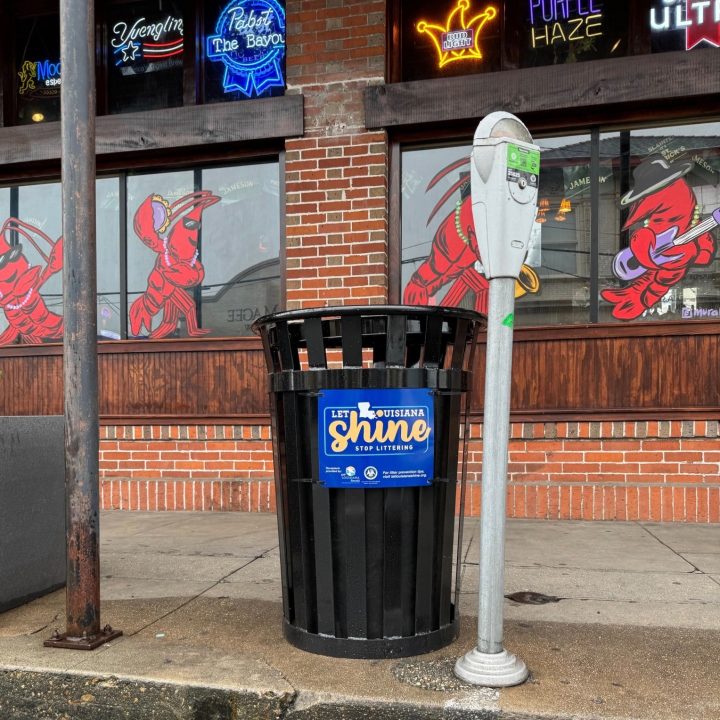
Ricky James Pellegrin
December 17, 2013
Anna Marie Reed
December 26, 2013The Lafourche Parish Council reversed nine parish presidential vetoes of earmarked public funds the governing body passed last month, but it’s still uncertain that the desired appropriations will reach their destinations.
Parish President Charlotte Randolph vetoed $895,000 the council allotted through the budget amendment process, striking down nine of 25 that were approved. The council responded by scheduling a veto-override session on the same night as a regular council meeting, which Randolph missed in lieu of a trip to Washington to advocate for a remedy to the Biggert-Waters Act, according to the parish’s spokesperson.
Although the vetoes were ultimately ineffectual, they highlighted a lingering issue regarding parish appropriations to nongovernmental bodies. And the ultimate authority to execute the transfers still rests with Randolph’s administration, which will likely require more information before determining whether dedications satisfy parish and state laws.
Each of the vetoed appropriations was for capital expenditures on recreation-related projects. Most controversial was $300,000 split evenly between the Larose Civic Center and the Cut Off Youth Center, two nongovernmental recreational facilities overseen by nonprofit organizations.
Councilman Jerry LaFont, who sponsored both appropriations, championed the virtues of the two institutions, both located in his district. He said the state’s means to gauge the legality of the disbursement of public funds shouldn’t apply to the facilities because their missions are altruistic, adding that south Lafourche has no other indoor recreational facilities to host organized sport.
“If these facilities didn’t exist, the parish would have to come down here and spend in excess of $4-or-5 million (for indoor recreation),” LaFont said.
District Attorney Cam Morvant II, the parish’s legal advisor, issued an opinion Monday regarding the allocation of public money, specifically citing the council’s override of Randolph’s vetoes.
“I would suggest that prior to any funds being transferred to the requesting entities both the Administration and the Council heed the suggestions made herein,” Morvant said, highlighting regulations on both the parish and state levels.
Statewide, the attorney general’s office uses a three-pronged test to determine whether a transfer of public money is within the law, as demarcated by the state Supreme Court’s 2006 ruling in the so-called Cabela’s Case. The suit was brought forth to determine whether the City of Gonzales could use a series of agreements to contribute incremental tax revenues for constructing the big-box retailer, a process ultimately deemed legal because of its public benefit via economic development.
The attorney general’s office has interpreted the ruling to mean that granting entities must show a public purpose and have a reasonable expectation of receiving at least equivalent value in exchange for the funding. The transfer, when taken as a whole, cannot appear gratuitous. To be legal, appropriations to nongovernmental entities must meet all three of these conditions.
Cabela’s applies in this scenario because the parish council wants to fork over tax dollars to private groups. The issue at hand is whether taxpayers see an equitable return on its investment, not whether the recipient is for-profit or nonprofit, economical or recreational, an empire or a children’s booster club.
The parish is guided by one ordinance, passed unanimously in 2005. It states that requesting entities must provide the council with a copy of audited finances before the transfer. Lafourche’s finance department has the authority to review the audited finances and give a report on its findings. The ordinance further stipulates that money should be dedicated to specific projects and that recipients give progress reports every six months.
Lafourche does not have a specific ordinance to further regulate how it can track spending of such money. Morvant suggested the parish forge agreements with recipients that require receipts detailing the expenses.
The allocation to the Cut Off Youth Center was stipulated as funding for “building facilities and grounds.” For the civic center, it was demarcated for “building maintenance.”
In the end, councilmen reapproved both allocations by an 8-0 vote. Councilman Phillip Gouaux was absent. Parish Administrator Archie Chiasson said the transfers would not be executed in the event they’re deemed to violate state law.
Chiasson also pointed out that the dedication to the Larose Civic Center comes amid long-running negotiations to secure a long-term agreement that includes building and maintenance funds. “We can’t come to an agreement on a long-term lease,” Chiasson said, indicating that the appropriation undermines the administration’s stance.
Councilmen claimed that the focus on expenditures to the south Lafourche nonprofits illustrates unfair treatment.
The parish council in July authorized Randolph to sign a cooperative endeavor agreement with Nicholls State University’s nonprofit arm regarding the transfer of $200,000. The parish agreed to appropriate the funds, and the foundation agreed to use the money for capital improvements. No other strings were attached.
“We need to get the money back from Nicholls,” Councilman Daniel Lorraine said.
But Chiasson said it was the Nicholls deal that put the spotlight on expenditures to nonprofit organizations. The parish denied funding requests from one nonprofit over the summer.
COUNCIL OVERRIDES
OTHER VETOES
The council had also amended the projected intake from a parishwide ad valorem tax dedicated to recreational facilities – Randolph’s original budget listed collections at $914,208, which the council hiked to $1.2 million. The parish president vetoed this move, saying adjustments to collections would be made upon receipt of taxes.
Lafourche taxes its residents 1.54 mills for parishwide recreation spending. That stream collected $1.4 million in 2013, about half a million dollars more than Randolph’s 2014 budget projection, according to the value provided by Tax Assessor Michael Martin.
Randolph vetoed $470,000 in capital outlay funding diverted from the recreation fund, including the $150,000 for the Cut Off Youth Center. The council restored that money to the projects, also including $150,000 for construction of a boat launch in Raceland; $50,000 for renovations at the Golden Meadow pool; and $120,000 to fund a splash park at the Bayou Blue Recreation Facility.
Other recreation projects, drawing funding from other sources, were also vetoed and subsequently restored: $50,000 in royalty to repair the Golden Meadow boat launch; $50,000 in royalty to fund parking and walkways at the Bayou Blue Recreation Facility; $150,000 in building and maintenance monies for the Larose Civic Center; and $25,000 in royalty to purchase playground equipment for Ward 6 Recreation.
Each of the veto-override votes had at least seven councilmen in favor, more than the six required by the parish’s Home Rule Charter.
Councilman Aaron Caillouet opposed each of the appropriations that concerned the recreation fund, reiterating his concerns that those capital expenses should be prioritized and accepted by the board of directors for the parish’s recreation districts.







